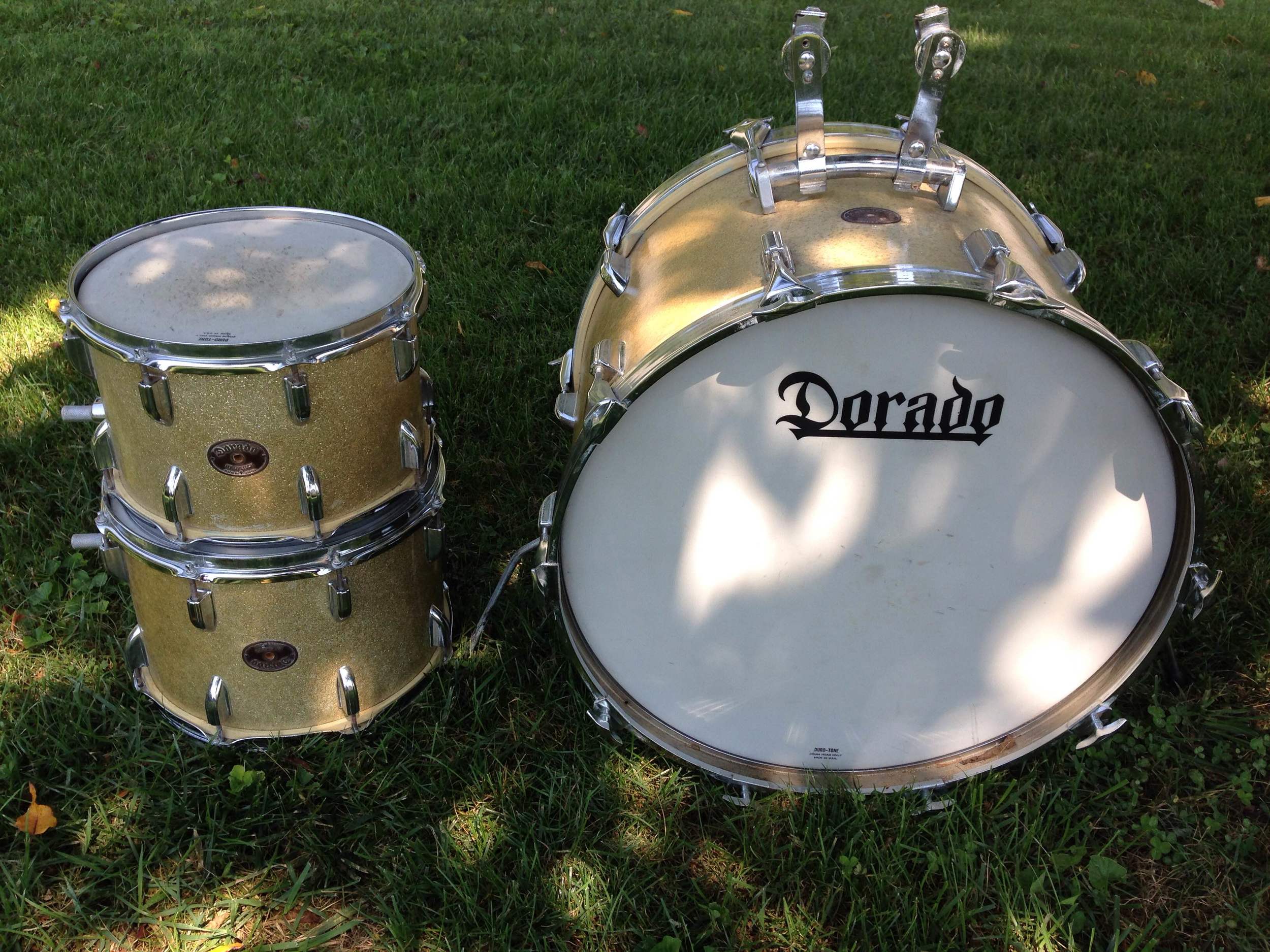This was sent to me by my drum nerd buddy Jay in Knoxville TN. He is the administrator of the Facebook group "Knoxville Drummers Union". He goes by the code name Jay Options over there. I think he is hiding from someone. You have to know the secret password to join that group and they are a shifty bunch :-) . Dorado Drums were added to the Gretsch Dorado catalog in 1973. They were cheap Japanese stencil sets; imports and didn't hang around too long. That's about all I know about them. I would put that particular set of Jay's in the $200 category just because they are in good shape. If the floor tom and snare drum were there they might be worth $300 to $350 - George Lawrence
Here is a quote from author Mike Jones about Dorado guitars. Some of this may be applicable to Dorado Drums.
" I love the Dorado myself and have the same model 12 string as you. I also have 2- Model 5985 solid-body electrics. They are extremely well made and very playable. I am including information about them in a chapter of my book "Gretsch's Lost Weekend; The Guitars of Booneville and The Hagner Musical Instrument Company, 1970-1981" I am not going to be devoting much to the acoustic models but here's what I can tell you.
The Dorado guitars were made by Matsumoko of Japan between 1971 and 1973. The most intersting thing is, other than minor cosmetic differences, Matsumoko made the exact same guitar for Epiphone, Aria, Conrad, Granada and Lyle, though less so, their acoustic guitars. The ones that were marketed by the other companies were manufactured between 1970 and 1976. The Headstock design seem to be the only real variable on all of the models. As to why they were distributed by Gretsch, there was a long standing rumor that the Dorado was imported by Gretsch/Baldwin to make up for the lack of inventory after the Booneville factory fire in January 1973 destroyed the Gretsch production facility. While a plausable theory, It doesn't work with the time line. It appears to be more of a deal worked out by Fred Gretsch (still on the Gretsch/Baldwin Board of Directors) and Bill Hagner to work with Japanese suppliers. Gene Haugh told me that the decision to import was made in the spring of 1972 by Baldwin and Fred Gretsch. The first catalogs with Gretsch's name appeared in the fall of the same year and offered only acoustic models. In the 1973 catalog they offered an electric 6 string solid-body as well as a solid-body 4 string bass. Your 12 string model was one of two 12 string models offered in the 1973 catalog. Interstingly they also offered drums that year. A little known fact that you might enjoy. Gene told me that Fred brought a Dorado acoustic to Booneville one day in early 1972. According to Gene, Fred had put some masking tape over the logo, came into Gene's office and asked him to try it out. Gene played around with it for a few minutes then Fred asked him how he thought it played and what he thought it was. Gene said it played great and thought it was a Gibson. Fred peeled the tape off to expose the Dorado logo and said "That's what I thought too. Were gonna start distributing these." Gene told me he didn't care much for the electric solid body model's finish but the acoustics were as good as anything anyone was making during those days. Dorado had 3 logos. Plain Gold screen in fat block letters, Gold silk screen normal block letters in 1971-72 and in 1973 they introduced a Stylish in-laid mother of pearl logo. Yours is a 1973. I'll see if I can find some acoustic pics of the Aria, Epiphone, Conrad, Lyle acoustics so you can see they are all the same. For now, here's how the Dorado solid-body electric compares with all the other Matsumoko solid-body electric guitars. I hope this helps.
Mike Jones






